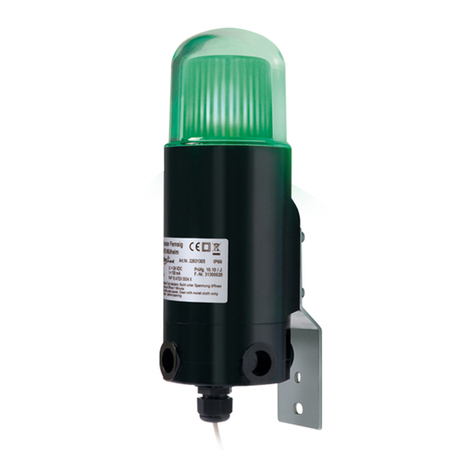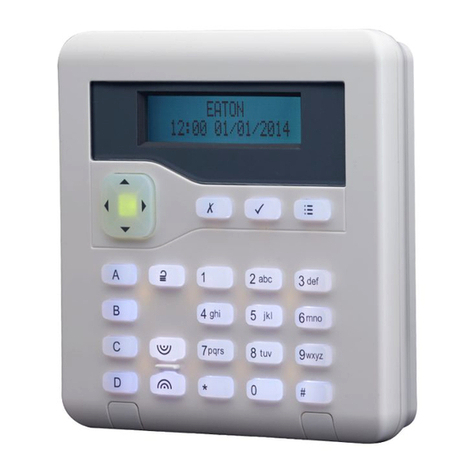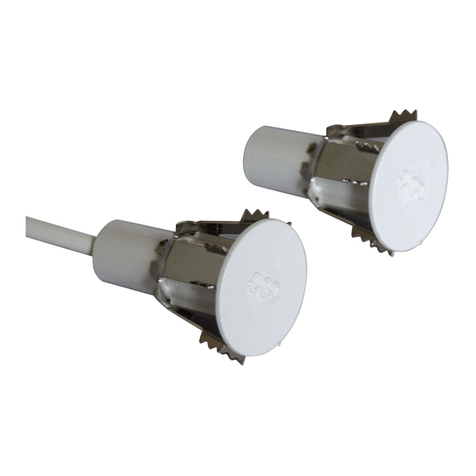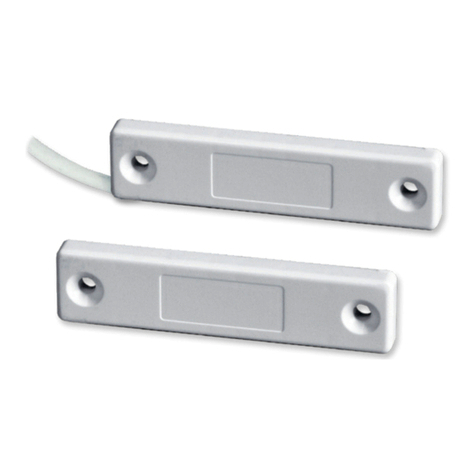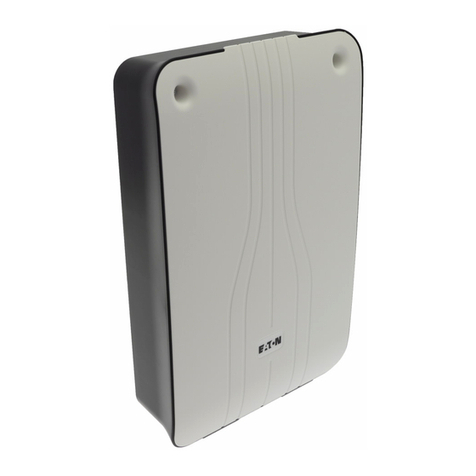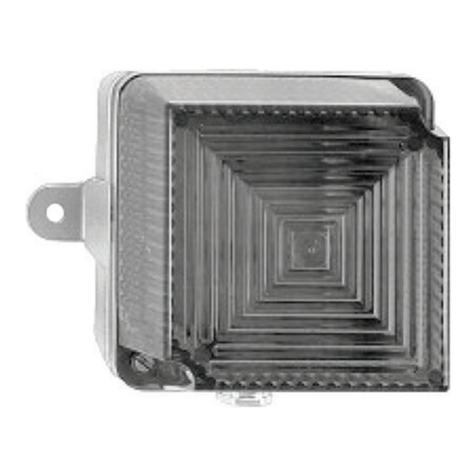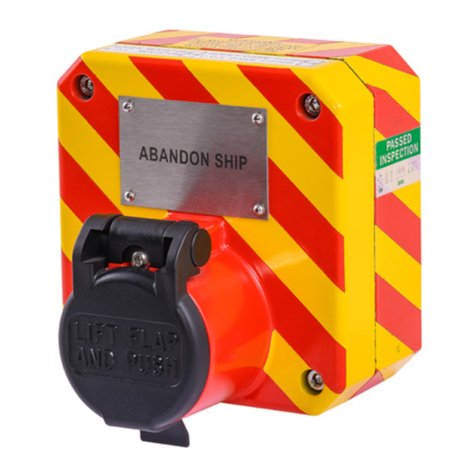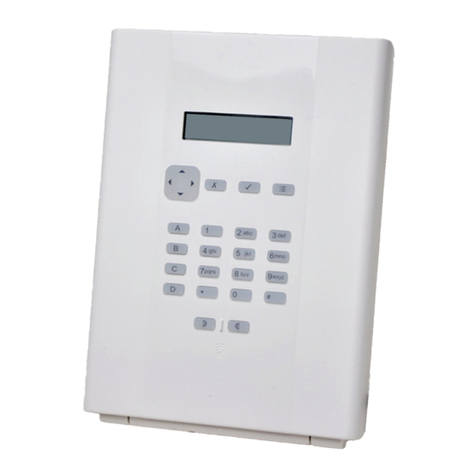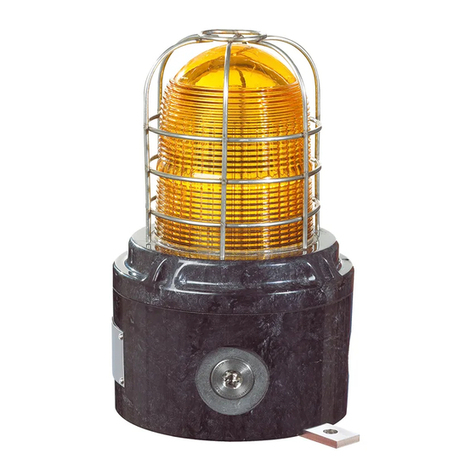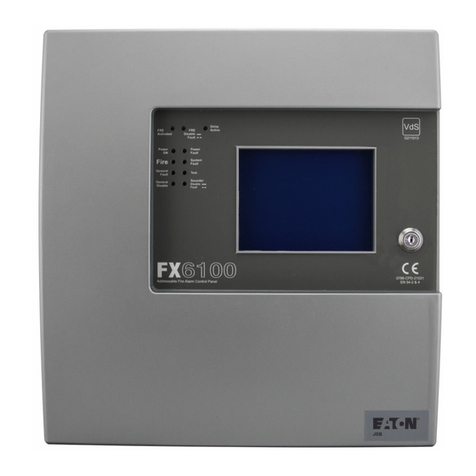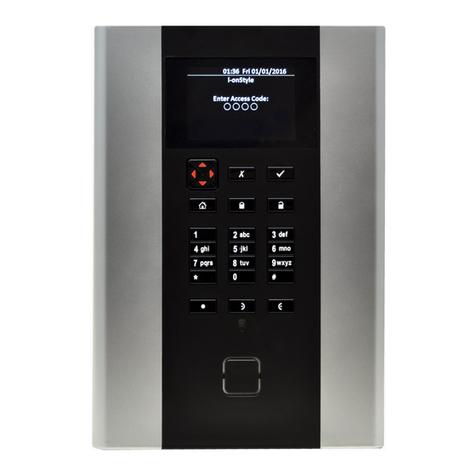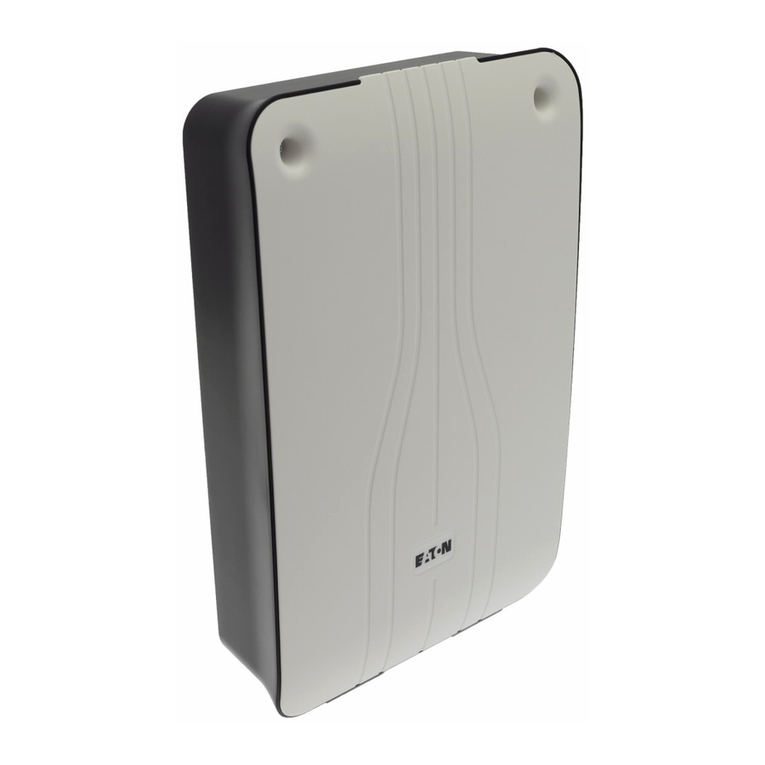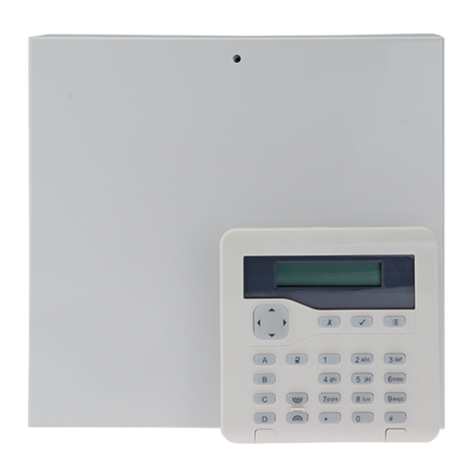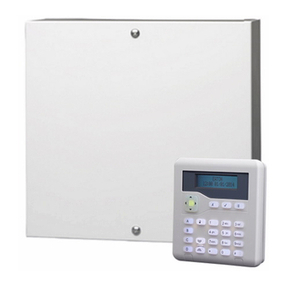
Page 2
Do not site the siren:
Within 1m of large metal structures
such as metal doors or frames, water
tanks, fridges and cars.
Within 1m of mains wiring, power
distribution units or metal pipes.
Inside metal enclosures.
Near high-voltage equipment, or near
electronic equipment such as
computers, photocopiers or other radio
devices.
Step 2 –Open the Lid of the Siren
1. With the siren not yet fixed to the wall,
open the hinged cover that gives
access to the lid-retaining screw (see
Figure 2).
2. Loosen the screw and open the lid.
Step 3 –Configure the Siren Jumpers
1. Remove the link/terminal cover (see
Figure 2) by pushing the two retaining
tabs to the side of the unit while lifting
the cover.
2. Set all jumpers in the siren to the
required positions (see Quick
Reference on page 3).
Step 4 –Teach the Control Unit the
Identity of the Siren
1. If not already done, power-up the
control unit. If the siren communicates
through a radio expander, add the radio
expander.
2. Place the siren next to a keypad and also
within range of the radio expander or
control unit that it communicates with.
3. Select: Installer Menu –Detectors/
Devices –External Sirens –Radio
Sirens –Add/Del Siren –<expander> –
<siren address> –Activate Siren
Tamper. Keep this option displayed
while you carry out the next step.
4. Connect both batteries in the siren (see
Figure 1). The control unit should
discover the siren and you should see
"Siren added". If you do not see this, try
again: disconnect the batteries, wait 30
seconds and reconnect.
5. Disconnect the batteries (to prevent a
risk of the siren self-activating). Do not
exit the Installer menu.
Step 5 –Attach the Siren to the Wall
1. Position the siren against the wall using
the built-in spirit level to assist levelling,
and mark all four fixing points.
2. Drill and plug the fixing points using the
screws and plugs provided.
3. Pass wiring through the cable-entry
hole.
4. Screw the siren to the wall. Use the
spirit level and revolving guides to
correct any misalignment.
Step 6 –Power-Up the Siren
Note: The sounder should not activate
during the following process. However, be
prepared in the event that it does
activate; make sure that any very loud
noise produced cannot cause a fall.
1. Re-connect the batteries.
The siren should power up in "silent
startup" mode, which is indicated by the
left-hand comfort LED remaining solidly
lit.
2. The right-hand comfort LED indicates
the state of the comfort LEDs. ON =
comfort LEDs enabled; OFF = comfort
LEDs disabled. To toggle the comfort
LEDs on/off, press the tamper switch
five times.
3. Re-fit the jumper/terminal cover, close
the lid, tighten the lid-retaining screw
and close the screw cover.
Figure 1: Battery
Connector
